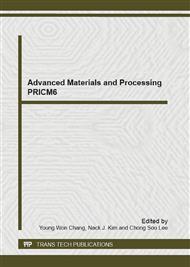p.817
p.821
p.825
p.831
p.835
p.839
p.845
p.849
p.853
Nano Composite Membranes of Sulfonated Poly(2,6-Dimethyl-1,4-Phenylene Oxide)/Poly(2,6-Diphenyl-1,4-Phenylene Oxide) Copolymer and SiO2 for Fuel Cell Application
Abstract:
The Sulfonated poly(2,6-dimethyl-1,4-phenylene oxide) / poly(2,6-diphenyl-1,4-phenylene oxide) (S-PPO) was prepared by oxidative coupling polymerization with 2,6-dimethyl phenol, 2,6-diphenyl phenol, CuCl(І) and pyridine, and followed sulfonation with chlorosulfonic acid. Copolymer was consisted of 2,6-diphenyl phenol 30 mol% and 2,6-dimethyl phenol 70 mol%. Organic-inorganic nano composite membranes were prepared with copolymer and a series of SiO2 nanoparticles (20 nm, 4, 7 and 10 wt%). The composite membranes were cast from dimethylsulfoxide solution. The membranes were studied by differential scanning calorimetry (DSC) and thermogravimetric analysis (TGA). Sorption experiments were conducted to observe the interaction of sulfonated polymers with water and methanol. S-PPO copolymer and nano composite membranes exhibited proton conductivities from 0.79×10-3 to 0.98×10-3 S/cm, water uptake from 21.70 to 24.77 %, IEC from 0.720 to 0.955 meq/g and methanol diffusion coefficients from 2.97×10-7 to 3.70×10-7 cm2/S.
Info:
Periodical:
Pages:
835-838
Citation:
Online since:
October 2007
Authors:
Keywords:
Price:
Сopyright:
© 2007 Trans Tech Publications Ltd. All Rights Reserved
Share:
Citation:


